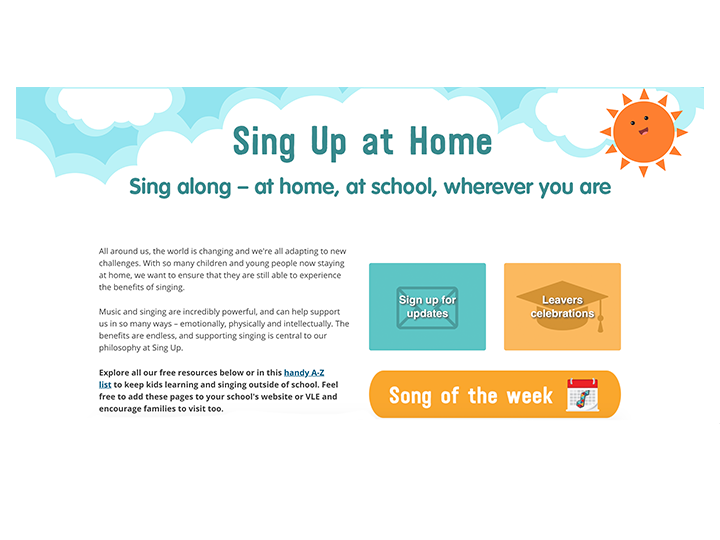
We recently ran a live Q&A on the topic of voice change in adolescents. Among the questions the Sing Up community asked our experts, we received some interesting questions on voice change during gender transition:
Question 1: “I sing in an adult Queer choir. Many trans folk are going through voice changes due to being on testosterone. Do the same techniques apply to older adults going through voice change as first time youth?”
Question 2: "A young person is going to start taking testosterone as part of their trans journey. Can anyone advise me as to what will happen to their singing voice? How will their range change and what differences should it make to their natural singing style?"

Feeling a little out of our depth, we turned to Artistic Director of New York Gay Men's Chorus Charlie Beale. Charlie has been working with LGBTQ choirs for 15 years. He is currently a board member at GALA choruses and has also researched the topic of voice change for a recent chapter that he wrote on LGBTQ singers in the Oxford Companion to Choral Pedagogy. Take a look at his expert advice below.
My starting point would be to say that you can’t generalize. It is important to treat each person individually, taking into account four main elements:
1. Their own physiognomy and voice use
By this I mean what their larynx and vocal mechanism is able to do, how flexible it is. This will vary from person to person depending on their age, when they start, the instrument they have been given and other factors like how they have used it up to now.
2. Their musical goals as a singer
Some biologically born women sing tenor and are comfortable identifying as women tenors, gay or straight. But others who identified previously as men want very badly sing to alto or soprano, even if they are currently a bass. So the way they construe their gender identity leads them into a musical/vocal goal of some sort, which may or may not be related.
3. The way they see gender identity
Some trans people will feel they are on a journey across a binary divide towards a clearly identified gender goal – for example, ‘I am a man, not a woman’. Others will approach it from the non-binary perspective, and might say things like 'I identify at different times with different places on a gender spectrum’, or ‘I identify now as a man. Although I need to change my body in certain ways, I don’t see that as meaning my voice has necessarily to change that much.’ The technical challenges will therefore vary hugely.
4. Repertoire they want to sing
Some repertoire conventionally requires a very specific sound, which can be associated culturally with a specific gender. Sometimes, less so. Church of England cathedral choral singing, for example, requires four clearly identified voice parts with their own timbres, tessituras, etc. These are gendered some of the time, though sopranos can be boys with unchanged voices, girls or women. Altos can be countertenors. But women can’t (usually) be tenors. By comparison, in pop music, some people who identify as guys can sing Alison Moyet or Cher songs almost as easily as those who identify as girls can, using almost the same timbres and techniques.
A couple of other general educational/social principles:
Enable vocal success, whatever that means for the person
In the end, the main objective with all singers in all choirs is to place them in a voice part, where they can succeed. I worked with a transgender woman singer in Australia once who badly wanted to sing alto or soprano, but had the sound, range and tessitura of a full-on classical tenor. She tended to stick out in the altos, as you can imagine. My general solution would be to say, where possible, ‘Why not be a woman tenor’ as this enables musical success. However, she felt strongly that she could not be a tenor, and so she stayed in the altos - that was success for her. In the performance, I had to arrange for her to sit out for certain songs as a result, which was better musically, but also better socially, as the other altos started to feel her sound was getting in the way. I also sat her on the border between the two parts, by a strong alto voice who could lead her through a gradual understanding of what that was about.
Regular frequent checking in, going case by case
The main thing that transitioning trans people have in common with those with changing voices is a general unpredictability of voice, a sense that it can’t somehow be relied on. Female to male transgendered people on hormones seem to go through similar challenges to those i remember as a teenager - your top end disappears, your low end appears but is unreliable and can disappear suddenly, your range becomes very small at certain times, the resonance changes, etc. Much has already been written about the different stages. So my advice would be to check in with the singer/s concerned at shorter intervals than 'cis' singers, maybe every 4-6 weeks or so, to keep a closer eye on what is happening with their voice and also with their gender journey. Are they on the same hormones as before, if they are on hormones? Changes can be gradual or sudden. What is their own experience of their voice, in relation to the repertoire you are covering?
Use this as a chance to challenge your own artistic assumptions and practices, and those of your group
A lot of what we have learnt or been taught about how conventional choirs work is more flexible than we think. In particular, the direct association of gender and voice part need not be set in stone. One advantage of having tenors who identify as female is that their high notes kick in at exactly the place where the male tenors tend to flag, especially in amateur singing. Also, think about at least doing some songs where everyone in their own group can choose what part suits their voice, and explore new sounds, rather than assigning them. I have had fun with my 250 singer TTBB group singing SATB songs at pitch, i.e. tenor 1s sing ‘soprano’ along with baritones with good falsetto range and resonance, and so on. We couldn’t do a whole show that way, but it was not only fun to try, but artistically successful – and not dangerous to voices as long as you choose the song carefully. Everyone learnt what was possible, and the trans people no longer felt that their experience was unique.
Beware of generalizations
What I am really saying is, as with all education: beware of making assumptions, be as respectful as you can, and then do your best to make it fun!
In school, expediency also means that people have to sing parts not associated with their gender identity from time to time anyway! In the case of the alto I discussed above, she had to sing falsetto a lot of the time, could not therefore sing very loud, and tended not to get in the way as long as the alto part was high enough. In her mid register, sticking out became more of a problem. Very low in the alto range, having that depth of sound was an active help, as the altos reached their limits. So the challenge was about finding songs that suited the voice in its current state and enabling everyone in the section to blend and create an even group sound.
My final advice to you is to read up about the changing voice. Working With Adolescent Voices [1999] by John Cooksey is a good starting point, and I know Sing Up has recent specialist help on this. One other good place to start is the GALA Choruses website. But then deal with each case as an individual. Respond both to the person and the voice.



